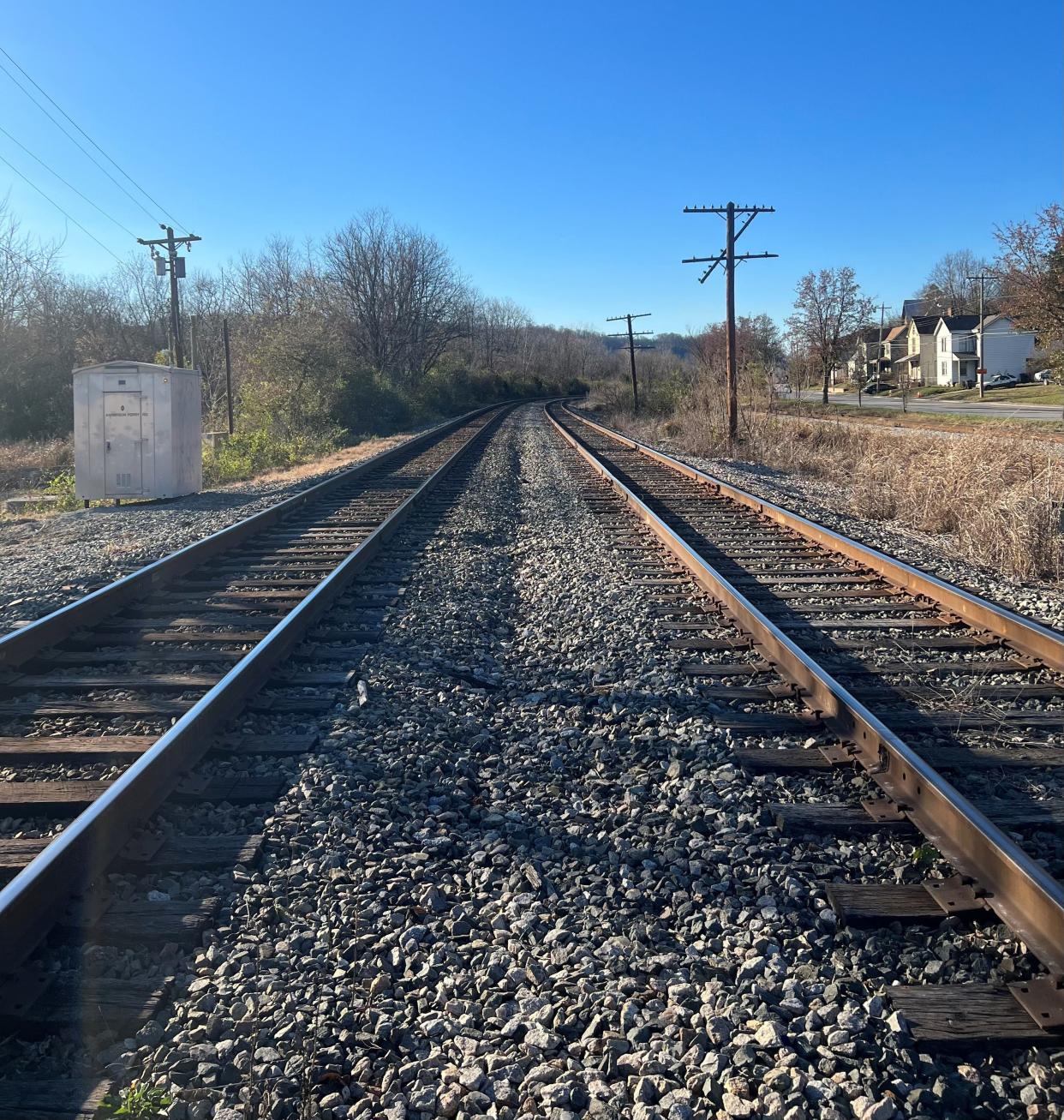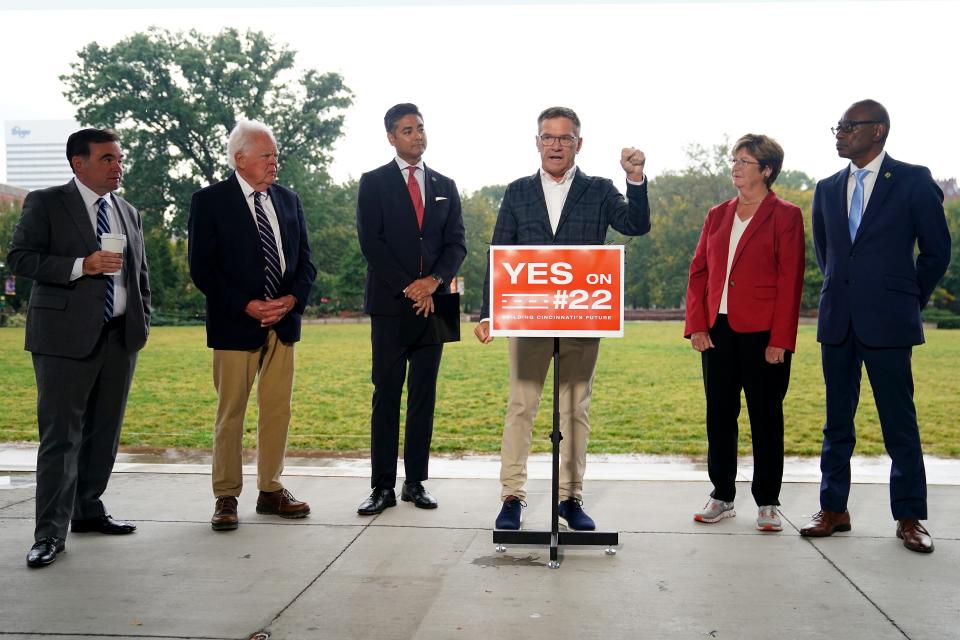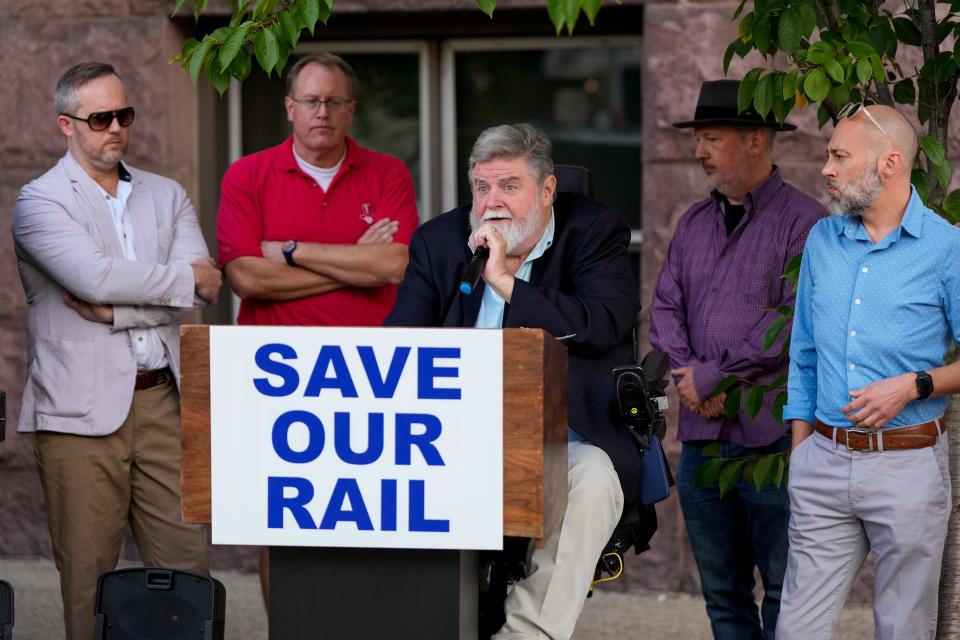Issue 22: What voters need to know about the Cincinnati railroad sale

What is issue 22?
Issue 22 is a ballot measure asking Cincinnati voters to sell the Cincinnati Southern Railway, the only city-owned railroad in the country.
Wait, Cincinnati owns a railroad?
Yes. Cincinnati in the 1880s built the 337-mile railroad that runs from Cincinnati to Chattanooga, Tennessee. It was completed in 1880. City leaders back then did not want to be cut off from goods and services as rail was growing in popularity.
The railroad was built for $18 million (about $618 million in today's dollars) after Cincinnati voters approved several bond issues to pay for the project.
So why is it on the ballot?
The independent board overseeing the railroad decided last November to sell it to Norfolk Southern Corp., the company that has leased it almost since it was built 143 years ago. The sale requires voter approval and the board in July selected this November for that vote.
But, by law, the board needs voter permission.
What is the actual ballot language?
Shall the Cincinnati Southern Railway Board of Trustees be authorized to sell the Cincinnati Southern Railway to an entity, the ultimate parent company of which is Norfolk Southern Corporation, for a purchase price of $1,600,000,000, to be paid in a single installment during the year 2024, with the moneys received to be deposited into a trust fund operated by the Cincinnati Southern Railway Board of Trustees, with the City of Cincinnati as the sole beneficiary, the moneys to be annually disbursed to the municipal corporation in an amount no less than $26,500,000 per year, for the purpose of the rehabilitation, modernization, or replacement of existing streets, bridges, municipal buildings, parks and green spaces, site improvements, recreation facilities, improvements for parking purposes, and any other public facilities owned by the City of Cincinnati, and to pay for the costs of administering the trust fund.
Why sell now?
The 25-year lease with Norfolk Southern expires in 2026. Board members say they began negotiating a new lease in 2021 when Norfolk Southern officials told them they wanted to buy the railway outright.
Why $1.6 billion?
The board’s chairman, Paul Muething, said the company and the board went back and forth for a year before settling on the $1.6 billion sale price. He said the board consulted appraisers to evaluate the offers and help determine whether a sale benefited the city more than renewing the lease. The deal was announced last November after months of secret meetings.
That's a lot of money. What will it be spent on?
The plan is to take the money and create a trust. Investment money from the trust would be used to repair and maintain current city infrastructure, per state law. Board projections say the city could reap $50 million to $80 million a year. If the investments on that $1.6 billion earn 3.5%, for example, the return would be about $56 million. If they earn 5%, the return would be $80 million. Cincinnati City Manager Sheryl Long has said the city has deferred maintenance needs of $500 million. She released a 10-year, $250 million spending plan that outlined spending on parks, recreation centers, firehouses, health centers and road repairs.
What does the city get now?
Right now, Norfolk Southern leases the railroad for roughly $25 million a year, an amount that is adjusted each year for inflation. During negotiations, Norfolk Southern Corp. last offered a lease payment starting at $37.5 million a year. The railroad board countered with a starting lease of $65 million a year. That's when Norfolk Southern offered to buy the railroad, setting in motion negotiations over the sale price.
Who would control the money?
If Issue 22 passes, Cincinnati wouldn't own a railroad anymore, but an independent board appointed by the mayor and approved by Cincinnati City Council would remain in place to oversee the investment fund. The board, as it is now, would select the people and firms who would run the fund.
There has been some talk that after a transition, board members would need money management expertise, but there's no formal outline of what the changes would be. Board members would decide each year how much money to give the city. City officials would then decide how to spend the money.
State law would require that the board to … "retain at least one independent financial advisor to assist the railway board of trustees in investing the trust fund” and "make public any management and investment policies it adopts."
The fund, by state law, cannot dip below 75% of its highest amount. If it does fall below that threshold, the board cannot give the city money until the fund reaches that threshold again. The provision is meant to safeguard the fund so it never goes away,
Who is on this railroad board?
The current board is a who's who of Cincinnatians. The five members are former mayors Charlie Luken and Mark Mallory, former Councilwoman Amy Murray, Keating Muething & Klekamp Attorney Paul Muething and accountant Paul Sylvester.
Is Norfolk Southern the best buyer?
The current lease gives Norfolk Southern the sole right to lease for another 25 years if the company wants to.
Proponents argue:

There is no guarantee the railroad would continue to be the asset it has been so it's best to control the money internally. Proponents say the city needs the extra money the say the investment fund would offer to start fixing crumbling infrastructure quicker.
Opponents argue:

Opponents are concerned about transparency, that the price the city is getting is too little, that investment returns won't live up to projections, how the money would be spent and that the buyer is Norfolk Southern Corp. Cincinnati City Councilman Scotty Johnson has expressed concern about the sale because there's no guarantee spending will be on neighborhoods that typically haven't seen city investment.
Who supports it?
The Cincinnati Southern Railway Board, whose five members decided unanimously to sell the railroad.
Cincinnati Mayor Aftab Pureval
Eight of the nine members of Cincinnati City Council: Democrats Jan-Michele Lemon Kearney, Victoria Parks, Reggie Harris, Mark Jeffreys, Jeff Cramerding, Meeka Owens, Seth Walsh and Republican Liz Keating.
Five former mayors: Roxanne Qualls, David Mann, John Cranley, Mark Mallory and Charlie Luken. The latter two are on the Cincinnati Southern Railway Board.
AFSCME Ohio Council 8 (American Federation of State, County and Municipal Employees), which represents public employees who are nurses, social workers, childcare providers, and sanitation workers in Cincinnati and the surrounding area.
African American Chamber of Commerce
American Postal Workers Union Local 164
International Brotherhood of Electrical Workers
Iron Workers Local 44
Laborers Local 265 (Construction workers.)
Ohio Environmental Council
UA Local 392 (Affiliate AFL-CIO, pipefitters, plumbers, mechanical equipment service workers and welders.)
Brotherhood of Locomotive Engineers and Trainmen
The Cincinnati AFL-CIO
Cincinnatus Association
Democrat U.S. Rep. Greg Landsman, a former Cincinnati City Councilman
Who's against it?
Cincinnati Charter Committee
Councilman Scotty Johnson, a former police officer
The Cincinnati NAACP
Rev. Damon Lynch, pastor of New Prospect Church, Roselawn
Black United Front
Save Our Rail, a group that includes former Cincinnati City Councilman Kevin Flynn, entrepreneur Adam Koehler, and westside activist Pete Witte and social justice activist Justin Jeffre, among others.
Todd Zinser, a retired United States inspector, spearheaded by Todd Zinser, a retired United States inspector
Derail the Sale, a grassroots group of people concerned about the environment and who the buyer is
Former Mayor Dwight Tillery
Former Councilman Christopher Smitherman
The Unity Council for the East Palestine Train Derailment, a group of residents of East Palestine, Ohio and outlying areas that were impacted by Norfolk Southern Corp. train derailment in their community on Feb. 3
Who's neutral?
Hamilton County Republican Party
What about the police and fire unions?
The city police and fire unions did not vote to take a position on the sale.
Who's sending all those vote for the railroad mailers?
A PAC called Building Cincinnati's Future, funded by Norfolk Southern, the proposed buyer of the railroad. The PAC is run by Jens Sutmoller, a friend and advisor to Cincinnati Mayor Aftab Pureval. Pre-general campaign finance reports aren't due until Sept. 26.
What about what happened in East Palestine?
The proposed buyer of the Cincinnati Southern Railway is Norfolk Southern Corp., which has long leased the railroad. Norfolk Southern is responsible for a Feb. 3 train derailment in East Palestine, Ohio that released toxic chemicals. The company has come under fire for the environmental disaster that was created. However, railroads are governed by the federal government. The city of Cincinnati, now or if the railroad is sold, would not be able to dictate what trains the Cincinnati Southern Railway line carry, control how many workers are on board or impose or enforce rail safety measures. This is more a real estate deal than a change in how the railroad would be operated.
When would it take effect?
The deal calls for the final sale sometime in the first quarter of next year. The board needs time to put a money manager in place. The board has publicly sought proposals for a money management firm, but the board won't select the best bidder until after the election, according to the request for proposal language. The first money from fund investments is expected before the 2025 fiscal year budget deadline, which is June 30, 2024.
Who can vote on Issue 22?
Any registered Cincinnati voter. If you live outside the city, it will not appear on your ballot.
What happens if the sale vote fails?
Pureval has minced no words: He has said: "If this doesn't pass, I know we will be on the path for the slow death of the city" and that there would be no choice but to "reduce the footprint of the city." If it doesn't pass, it's back to the negotiating table, as a new lease would have to be worked out.
The board would still have to work with Norfolk Southern Corp. on a new lease. If they can't come to an agreement, the issue would go to an arbitrator to sort out a final lease price. Norfolk Southern could decline to lease the railroad, which then would allow the city to negotiate with others.
This article originally appeared on Cincinnati Enquirer: What is Cincinnati's Issue 22?

